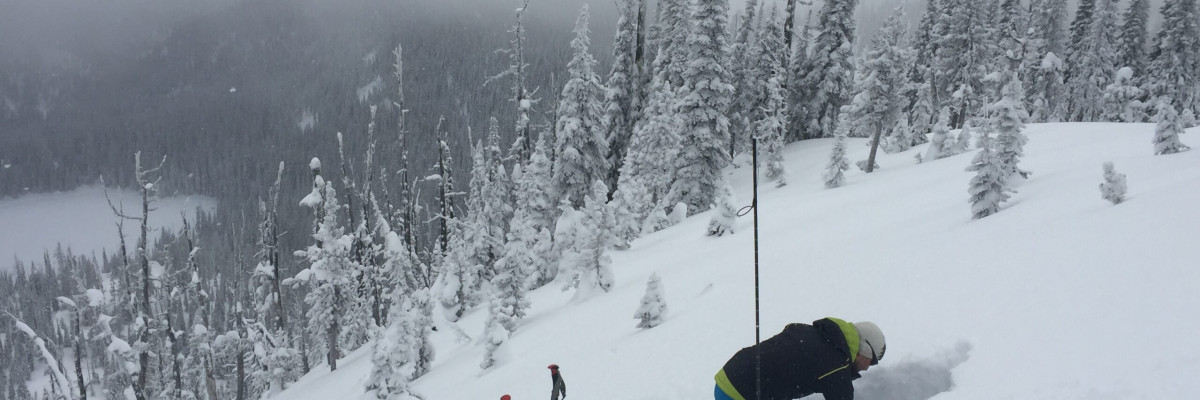The current avalanche danger is MODERATE for the West Central Montana backcountry, human triggered avalanches are possible on specific terrain. Careful evaluation of terrain, weather, and snowpack will be critical as conditions change throughout the day today.
Good morning, this is Logan King with the West Central Montana Avalanche Center’s avalanche advisory for Tuesday, December 27th, 2016. This danger rating does not apply to operating ski areas, expires at midnight tonight and is the sole responsibility of the U.S. Forest Service.
Weather and Snowpack
Over the weekend 6-10 inches of low density snow fell across the advisory area. Winds remained calm through Sunday morning but have climbed back up and are currently gusting into the 20’s from the south. A trace to 3 inches of new snow accumulated overnight and mountain temperatures are currently in the teens.
Yesterday Josh and went to the rattlesnake to see how the new snow was bonding to and affecting the snowpack. We found that the primary concern continues to be windslabs. Of greatest concern will be soft windslabs that formed over the weekend sitting on old hard windslabs that provide a good surface for shear. With variable winds that are fairly sustained windslabs will continue to develop on a variety of aspects and will further stress the snowpack. Winds shifted throughout the storm and windslabs can be found on nearly every aspect and cross loading will be problematic. Carefully evaluate slopes for signs of wind affect before you chose to recreate on them.
The persistent slab problem is moving the right direction as depth hoar is gaining strength and is not as reactive. The persistent weak layers will need more time to settle and gain strength before we can stop identifying them as a problem. Facets will continue to be of concern in areas where the snowpack is shallower or stressed from the new load and will require careful evaluation.
Loose snow avalanches are also a concern as the new low density snow will likely be moving on the snow surface in steeper terrain. Be cautious of any terrain traps that will increase the consequences of getting caught in a loose snow or sluff avalanche.
The beacon park at Snowbowl is now operational, so get out and practice with your beacons.
Avalanche and Weather Outlook
Mountain snow and and strong winds looks to develop through today bringing anywhere from 3-12″ inches of snow by tomorrow. Watch the falling snow as it will add stress to the snowpack and if significant accumulations occur give the snow a few days to settle and adjust to the new load. Snow will continue through tonight and into tomorrow but the bulk of the snow looks to come today and tonight. With good accumulation and winds in the 50+mph range expected in the mountains, avalanche danger will increase significantly in the next 24-48 hours.
The next advisory will be issued on Thursday, December 29th, 2016.
Ski and ride safe.














